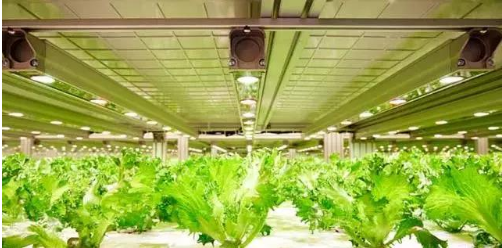Japanese plant factories use Philips LED light supplement system to increase production and reduce costs
Shinnippou has been operating 808 plant factories in Yaizu, Shingoka Prefecture, Japan since January 2014. This large plant factory covers an area of about 5,000 square meters. The facility uses artificial lighting system to produce four kinds of salad vegetables.
Katashi Kai, general manager of Shinnippou Agricultural Management Department, described the advantages of plant factory production: "The greatest advantage of using supplementary light system in plant factories is that it can ensure stable production and supply throughout the year, free from changes in climate and environment. In addition, through advanced cultivation management and health control methods, the pollution of dust, pests and foreign bodies can be completely eliminated, and high-quality, very safe vegetables can be produced without pesticides. At the same time, Kai mentioned that the biggest constraints and challenges facing plant factories are equipment costs and operating costs.
When the plant plant plant operated, the fluorescent lamp was initially used as artificial light source. According to Kai, it was too expensive to introduce LED as a supplementary light source at that time, and there were some concerns about its reliability. For this reason, the initial three-year operation plan covered the study of fluorescent lamp and LED lighting effects.
The study found that fluorescent lamps have a variety of problems. For example, the heat generated by fluorescent lamps can burn plant leaves and shorten the shelf life of vegetable products; the light intensity of fluorescent lamps will decay after about six months due to the limitation of their service life; moreover, even if there is no accident, there is still a risk of foreign body pollution due to the damage of fluorescent lamps alone.
Kai said: "LED has no such problems or risks. Therefore, we decided to use Philips LED light supplement system, because in the medium and long term operation, the cost of using Philips LED equipment and operation costs will be greatly reduced, and compared with other brands of LED equipment, Philips LED finally won the test.

About 12,000 Philips LED products were installed in the first plant plant facility, which began operation in 2014, and nearly the same number of Philips LED products were installed in the second plant facility, which was completed in 2017. Eventually, compared with fluorescent lamps, electricity costs were reduced by about 40%, while vegetable growth was accelerated by 20% to 30%. Higher growth rates meant higher yields and lower production costs in the facility, while the taste and nutritional content of vegetables remained unchanged. In a word, after the introduction of Philips LED light supplement system in 808 plant factory, the production is increased and the cost is greatly reduced.
Mr. Kai looks forward to the future: "As climate change makes it more and more difficult to grow vegetables in the field, we expect that the production of vegetables in large plant factories will become the focus of attention in Japan and overseas in the future. Therefore, we hope to share our technology and experience with you, so that vegetable produced by plant factories can become a common standard food for consumers.
"Vegetables produced in plant factories may become standard ingredients around the world in 10 years." He said.

